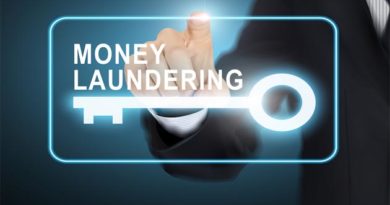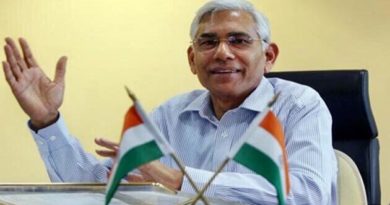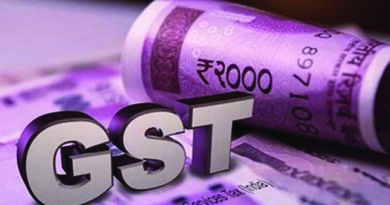INCOME TAX MANAGEMENT FOR SALARIED CLASS – With special reference to Bank Employees
First of all, lets distinguish between Tax Management and Tax Evasion. Tax Management is a much desired and legally tenable concept, while tax evasion is illegal stealing/concealment of tax with the help of unlawful manipulations. Tax Management is tax planning, which helps you save tax legally within the boundaries of law. After saving tax via this route, you do not have any remorse or fear of law. You can disclose without fear your ways and means of tax saving. Income Tax act has provided for many exemptions and deductions, which one can and must avail oneself of to save taxes. On the other hand, tax evasion is highly fraught with risk and is never advisable.
A few examples of tax evasion (which one must refrain from):
- Not declaring your income in income tax return e.g. many people would not declare interest received on fixed deposits.
- Some people would arrange fake house rent receipts to get relief from HRA (House Rent Allowance).
- Some people would manage fake donation receipts to claim under section 80G.
Examples of Tax Management/Planning:
- Investing in instruments to avail deductions under chapter VI.
- Investing in residential house property etc. to save tax from capital gain.
- Availing housing loan to avail the benefit of interest payable under Section 24.
Most salaried people find at the end of the month, a good chunk of their salary having been devoured by income tax. Most salaried employees carry less than half of their salary as take home pay and live with the nightmare of how to save income tax. The first thing they look for in the Union budget report every year is new benefits with regard to income tax;whether their tax outgo will increase or decrease. Though tax rules are not in our hands, there are a few judicious ways within the ambit of the law to save income tax. Here are a few tips given with regard to tax management for salaried employees.
-
Relief under section 89 for arrears received
: Any portion of salary received in arrears or in advance [Subject to certain conditions and circumstances] can be bifurcated among the respective years to which they actually belong, to claim relief under section 89. It is beneficial for those who have received arrears pertaining to a year when they were under a lower tax rate slab in comparison to year in which it is actually received. To claim such relief, filing of form 10E is mandatory.
-
House Rent Allowance
:One should prefer to avail residential quarter facility / leased house facility provided byemployer rather than availing HRA (house rent allowance) as a part of salary. However, if one is availing HRA, one should keep in mind that it is taxable. If one is paying rent, one should endeavour to get deduction of HRA from income to the extent it is exempted under section 10(13A) and rule 2A.The least of the following three is exempted in this regard.
- Actual HRA given by the employer
- 50% of the salary if the rented house is situated in Delhi, Mumbai, Kolkata and Chennai. Else, 40% of the salary.
- Actual house rent paid, minus 10% of salary.
Important:
- Exemption is allowed even if rent is paid to close relative like wife, father, mother etc.
- Salary here means Basic Pay plus specific commission plus Dearness Allowance (if it is part of salary for computing all retirement benefits).
-
Medical Expenses:
We are aware that reimbursement of medical treatment by employer is exempted to the extent of Rs 15000 per year. In this regard, one should keep in mind that following are also exempted over and above Rs 15000.
- Medical facility provided by employer in a hospital/clinic/dispensary maintained by employer.
- Medical facility availed in a hospital/clinic/dispensary maintained by Government / local authority or in a hospital approved by Government for its employees.
- Medical facility availed in a hospital/clinic/dispensary approved by the Chief Commissioner of Income Tax for treatment of prescribed diseases or ailments.
- Group medical insurance obtained by employer for its employees or reimbursement of medical insurance premium
Important: Fixed medical allowance is fully taxable, hence employees should insist on medical reimbursement instead of fixed medical allowance.
-
Deduction under section 80 C
: Maximum Rs 1.50 lakhs can be availed under this section. There is a long list of items which come under this section. We narrate a few most beneficial for salaried employees.
| Scheme | Lock-in period | Tax on interest / dividend | Leverage |
| PPF | 15 Years | Not taxable | Best for those who can compromise with liquidity. |
| NSC, tax saving fixed deposits | 6, 5 years | Taxable | Bad option, as income is taxable, but good for those who need money back soon. |
| ELSS (Equity linked saving scheme) | 3 years | Not taxable | Best for those, who can take risk.It is an investment of category “high risk, high gain”. |
| Life insurance premium | As per plan | Not taxable | Not a good idea, due to big lock-in period and very low gains. However, one must take a pure term plan as per one’s income and requirement. |
| Provident fund contribution by employee to a recognized fund | Normally till retirement | Not taxable | It is compulsorily deducted, so no choice. However, one can get additional deduction, as interest earned is tax free like PPF. |
| Sukanya Samriddhi account | 21 years or till the marriage of the girl child | Not taxable | Best for those who can compromise with liquidity. Interest rate is more than PPF. |
| Senior Citizen Saving Scheme (SCSS) | 5 Years | Taxable | Good for those retired persons whose income is within Nil tax bracket. |
For those, who can not afford to invest under section 80C, they must seek following two options which are like expenses but covered under section 80C.
- Tuition fees paid for self and upto two children to the extent of Rs 1.50 lakhs.
- Repayment of principal of housing loan to the extent of Rs 1.50 lakhs.
-
Deduction under section 80 CCD (1B)
: Maximum Rs 0.50 lakh can be availed under this section by investing in NPS (National Pension scheme). This deduction is over and above Rs 1.50 lacs deduction of section 80C.
-
More Deductions beyond section 80 C
: There are many more deductions under sections 80D to 80U which certain persons can avail themselves of, if eligible.
-
Interest on saving bank
: it is exempted to the extent of Rs 10000 per annum under section 80TTA. Besides, Post office savings account interest is exempt upto Rs 3500 in case of a single account and Rs 7000 in case of a joint account.
-
Voluntary Retirement planning
: As incidence of tax on gratuity, commuted pension, leave encashment etc is lower, if one is retired in the beginning of the financial year, employees should plan their voluntary retirement in the beginning of the financial year.
-
Loans on simple interest:
Employees should not prepay housing, car and demand loans which employer extends at simple rate of interest. If one has surplus funds, one should invest themin other good avenues rather than repaying subsidized loans. However, income tax is payable on subsidized portion.
-
Interest payment on home loan
: Under section 24 (b), interest on home loan availed for house is deductiblefrom Income from House property. Following points are worth noting in this regard.
- If house is not let out, it can be self occupied or deemed to be self occupied under certain conditions. In such cases, maximum deduction will be Rs 2.00 lacs subject to fulfilment of the following three conditions. (i) loan is availed on or after 01.04.1999, (ii) loan is availed for the purpose of purchasing or constructing a house property (iii) Construction / possession is completed within 5 years from the end of FY of borrowing.
- If any one of the above three conditions is not fulfilled, interest deduction for self occupied house will be restricted to only Rs 30000 instead of Rs 2.00 lacs.
- Interest of pre construction period is also deductible in five years starting from the year when the construction/ possession is complete. In case of self occupied house, total deduction will not be more than Rs 2.00 lacs.
- Deduction is available on accrual basis and not on payment basis.
- There is no limit of Rs 2.00 lacs per annum, if house is actually let out. It means any amount accrued as interest is deductible.
- This deduction is available only from the year when the possession of the house is received or construction is completed.
- On calculation of income from house property, the net income may be in gain or loss. In case of self-occupied house, the loss can never be more than Rs 2 lacs and it can be set off with incomes of other heads like salary etc. In case of let out property, loss can be any amount, which till AY 2017-18 could be set off with incomes of other heads.
- From AY 2018-19, section 71(3A) has been inserted, which states that set off of loss from house property will be restricted to Rs 2 lacs only. However, the unabsorbed loss can be carried forward for eight assessment years and can be set off against gains under house property head in future years.
- If interest burden is much above Rs 2.00 lacs, it is in the interest of the assessee to let out the house instead of self occupying it. In some cases, people have opted to live in a rented house and let out their own flat to maximize deduction under section 24(b). In some cases, twoowners rented out their flats to each other to avail this benefit. This action is well within the limits of law and does not attract any penalty or legal action.
Disclaimer: Above tips are only illustrative and indicative. One must resort to actual income tax laws/rules before acting upon any advice given in this article. A tip may not be universally good for everyone. It may be working for one person but may be detrimental for another.
Above tips may and may not be sustainable in future depending on the changing rules of Income Tax.
By Sanjay Gupta, Chief Manager, Research, State Bank Academy, Gurgaon




